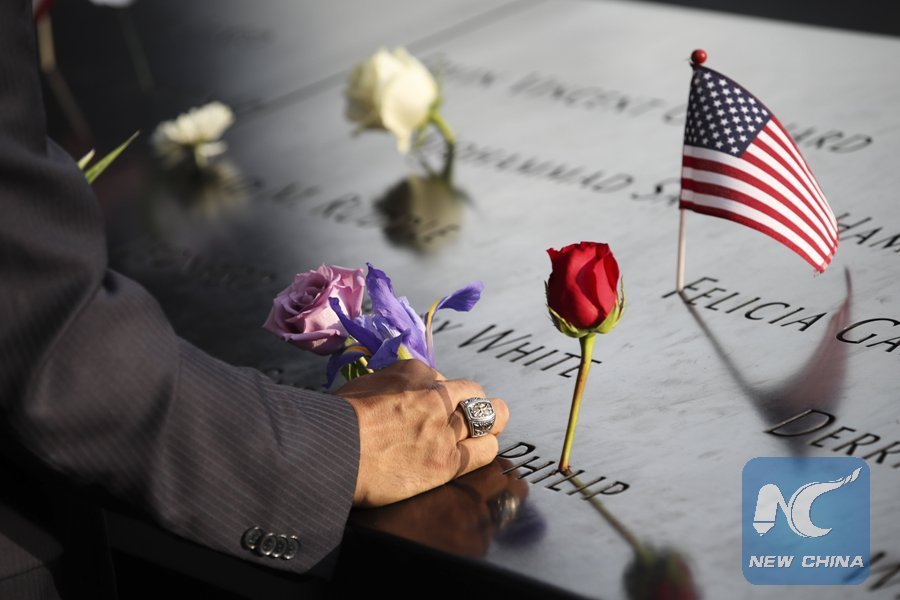
File Photo: A man places a flower on a plate on which the names of 9/11 victims were inscribed around the South Pool at the National September 11 Memorial and Museum in New York, the United States, on Sept. 11, 2017. (Xinhua/Wang Ying)
WASHINGTON, April 26 (Xinhua) -- A study published on Thursday in the journal JAMA Oncology reported that New York City firefighters exposed to the 9/11 World Trade Center (WTC) disaster site were facing an increased risk for developing myeloma precursor disease or MGUS.
In MGUS (monoclonal gammopathy of undetermined significance), the blood's plasma cells produce an abnormal protein called monoclonal protein that may cause multiple myeloma, a blood cancer that can crowd out the bone marrow's normal blood-forming cells.
The study analyzed blood samples of 781 white, male WTC-exposed firefighters aged 50 to 79 and compared them with MGUS prevalence in a non-exposed comparison group. It found that the prevalence of MGUS in the firefighters was nearly twice as high.
Most multiple myeloma cases are usually diagnosed in people older than 65, and only 5 percent of cases occur among people under 50.
In a separate analysis, the researchers examined the 16 cases of multiple myeloma diagnosed between Sept. 12, 2001 and July 1, 2017 among all white, male WTC-exposed firefighters in the Fire Department of the City of New York.
Their average age of diagnosis was 57, or 12 years younger than the average age for multiple myeloma diagnosis nationally.
"We saw a significantly higher incidence of MGUS in these first responders, and they're developing it at a young age," said the study's senior co-author Amit Verma, director of hematologic malignancies at the Montefiore Einstein Center for Cancer Care.
Their early development of MGUS suggested that these firefighters potentially faced an increased risk for early-onset of multiple myeloma as well, according to Verma.
Previous studies have shown that MGUS and multiple myeloma all tend to develop after exposure to toxic chemicals.
The aerosolized dust from the collapsed towers exposed firefighters and other first responders to unprecedented levels of polychlorinated biphenyls, polycyclic aromatic hydrocarbons, dioxins, asbestos and other potential carcinogens, as well as diesel smoke from heavy machinery used in the 10-month rescue and recovery effort.
While not everyone with MGUS will develop multiple myeloma, the researchers recommended that physicians screen first responders exposed to the WTC site.

